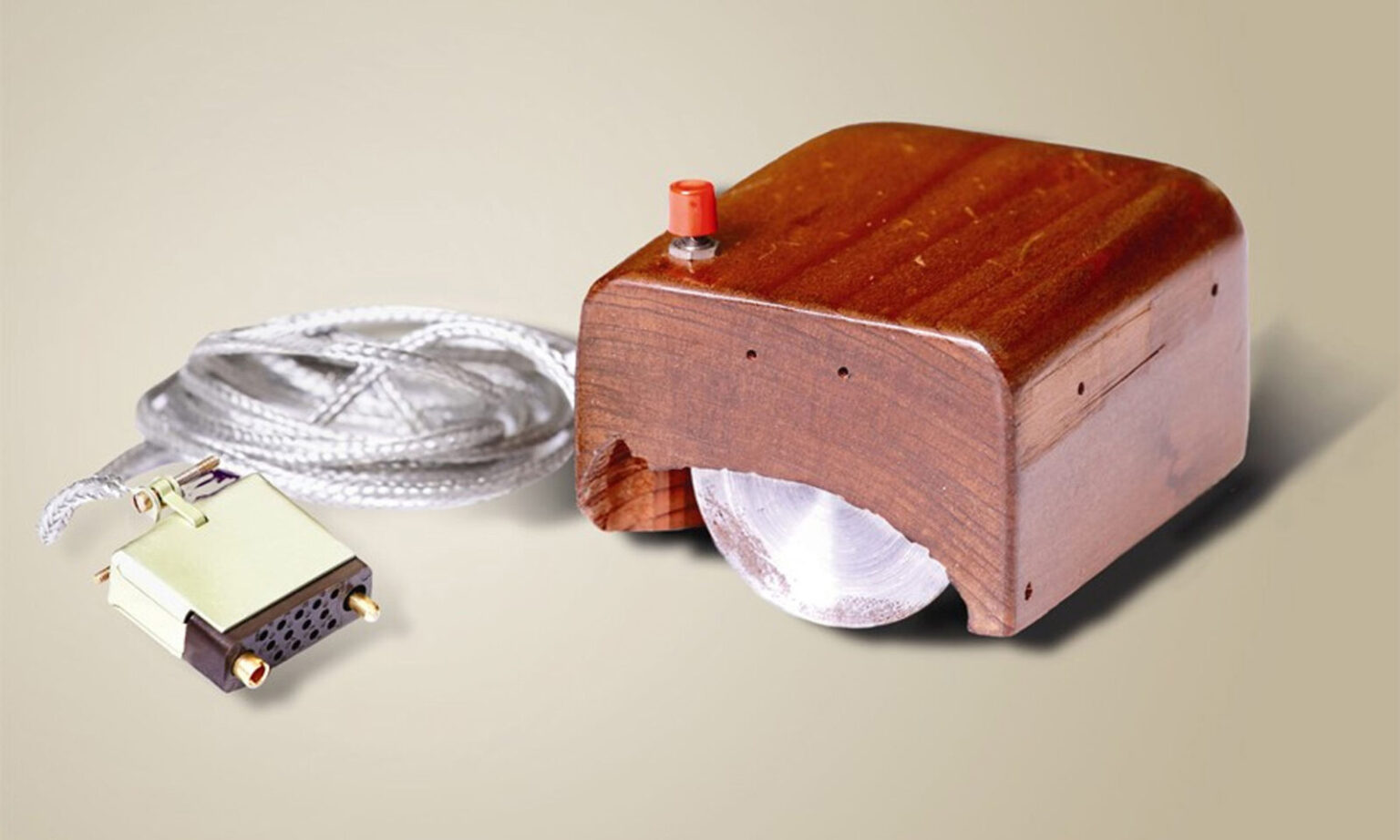Today’s computer mice are wonders of ergonomic design and precision sensors, but their humble ancestors were far less sophisticated. Believe it or not, the very first computer mouse was a clunky, wooden block that helped pave the way for the way we interact with computers today.
Meet Douglas Engelbart: The Mouse Pioneer
In the 1960s, visionary engineer Douglas Engelbart sought a more intuitive way to control computers beyond the clunky keyboards and punch cards of the time. His team at the Stanford Research Institute developed an unassuming wooden shell housing two metal wheels – one vertical, one horizontal. By moving the device across a surface, a user could correspondingly control a cursor on a screen. This simple invention became known as the “mouse” due to its shape and the cord resembling a tail.
Engelbart’s invention debuted in 1968 during a presentation later dubbed “The Mother of All Demos,” showcasing revolutionary concepts like video conferencing and hypertext. The wooden mouse played a central role in this historic demonstration.
The Evolution of the Mouse
- The Wooden Block Gives Way: In the 1970s Xerox PARC refined the mouse concept, introducing a ball-tracking mechanism for smoother movement. This design became the standard for years to come.
- Optical Revolution: The 1980s saw optical mice emerge, using LEDs and light sensors instead of mechanical parts, improving accuracy and reducing maintenance.
- The Scroll Wheel Arrives: The 90s introduced the scroll wheel, forever changing how we navigate documents and web pages.
- Ergonomics Take Center Stage: Recent decades focused on ergonomic designs, with contoured shapes and customizable buttons for maximum comfort.
- Wireless Freedom: Wireless mice became prevalent, eliminating pesky cords and allowing greater freedom of movement.
- Trackpads: A close relative, the laptop trackpad, offered a portable alternative to the physical mouse.
Beyond the Click: The Mice of Tomorrow
The quest for the perfect pointing device continues with innovations like:
- Touch-sensitive Mice: Mice with integrated touch surfaces allow for multi-touch gestures alongside traditional buttons.
- Air Mice: These enable control through mid-air gestures, freeing you from your desk.
- Gaming Mice: Specialized mice with high sensitivity, programmable buttons, and flashy designs cater to the gaming crowd.
From its wooden beginnings, the computer mouse has transformed our relationship with computers. Its continued evolution promises ever more intuitive and seamless ways to interact with the digital world.





